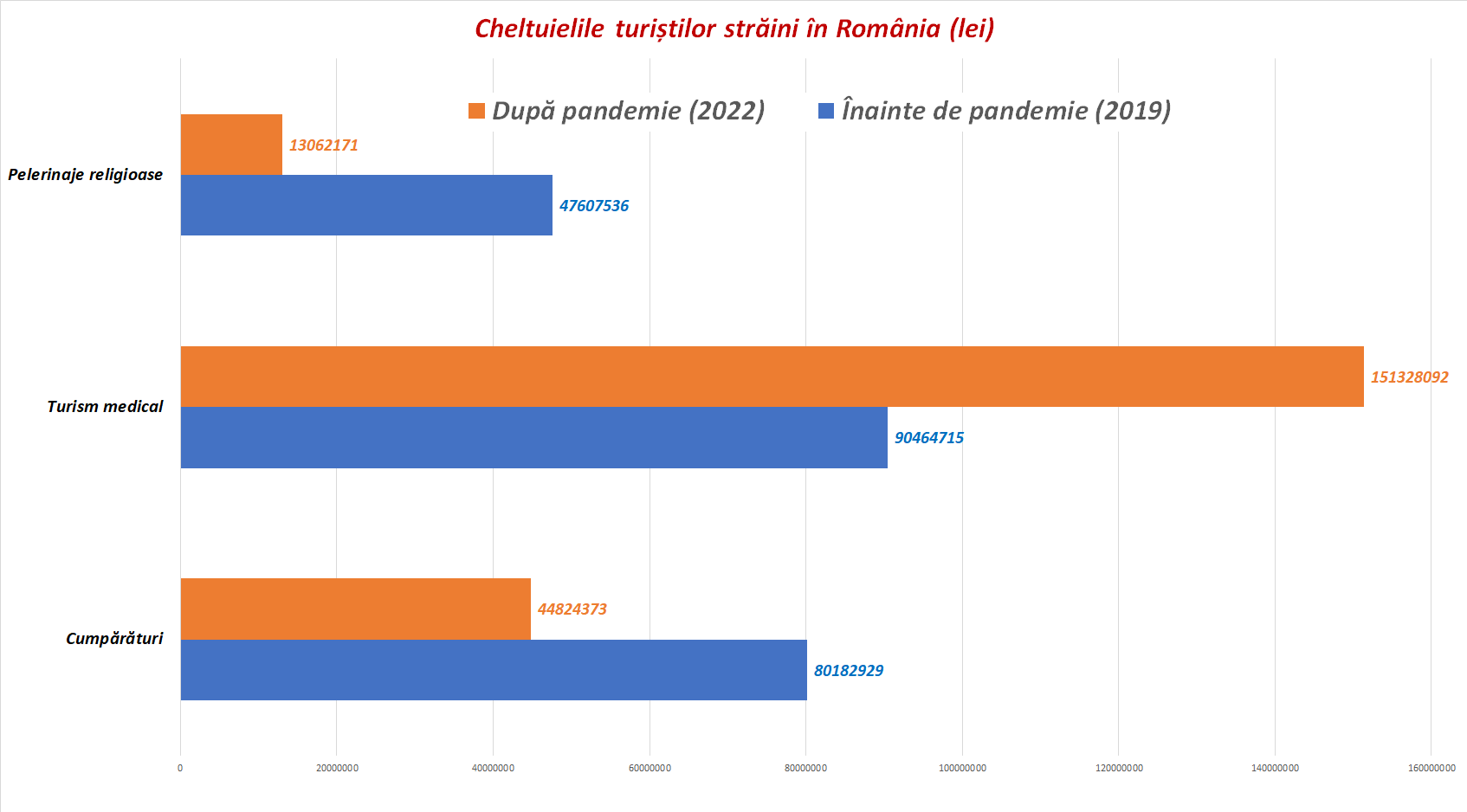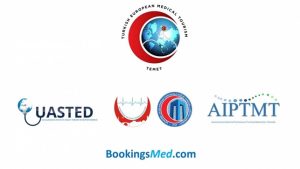
Every year, thousands of foreign tourists come to us to have their medical problems solved, as in their countries the same intervention would cost much more. Before the pandemic, they left about 90 million lei, according to data from the National Institute of Statistics. Last year, they contributed more than 151 million lei to health accounts.
At the same time, interest in shopping and religious pilgrimage tourism has declined.
The increase is not only in terms of the amount of money that stays in the country but also in terms of the number of tourists.
Not all of them are necessarily patients of Romanian hospitals, but some are their relatives. Evelina Popescu is from Canada, where she works in IT&C. Originally from Bihor, she has been out of the country for 20 years, but when her mother fell ill and was admitted to hospital, she returned home to be with her. She is one of around 5 000 tourists who have come to Romania for medical reasons.
But the fact is that medical tourism has grown strongly in recent years in Romania, reaching more than 10% of the total number of hotel guests in big cities such as Bucharest, Sibiu and Cluj. Most come for cosmetic surgery, dental work, obesity surgery and wellness, according to studies by private tour operators. This type of tourism is growing by about 30% each year, the study authors say.
The study also found that the most sought-after clinics are those in Bucharest, Sibiu or Cluj, with private medical centers being targeted.
“Patients’ relatives either come and stay at the hotel during the operations or afterwards patients return to the city for post-operative treatments and check-ups. An attendant stays at least two days in the hotel, but there are some who stay for ten days. Look for budget hotels near hospitals. They are totally anchored in medical tourism, do not visit the city and are trapped in the hotel, where they eat and use all possible services, from laundry to taxis. They don’t care about anything else. They stay all day with the patient, at the clinic or the hospital, and in the evening, they come back and eat at the hotel,” adds Călin Ile, one of the study’s authors.

This phenomenon does not occur in Romania, but throughout Eastern Europe
For many years, Gdansk, the largest city on Poland’s coast, has attracted foreign tourists because of its historic center or nearby sandy beaches. More recently, tourists have found another reason to travel there: dental clinics.
“When we started 10 years ago, we were almost the only business here that was targeting international patients,” says Anna Sarzynska, owner of Anna’s Dental Clinic in downtown Gdansk. “Today almost every clinic in the city offers its services to foreigners,” writes the FT.
Ms Sarzynska says about 80% of her clients come from abroad, mainly from Scandinavia, but also from the UK and Ireland. She has had to make extra hires for patients.
Medical tourism is growing in Central and Eastern Europe by 12-15% annually, according to PwC
Magdalena Rutkowska, owner of Medical Travel Partner, a consultancy company, has been working in medical tourism since 2010 and has noticed increased interest in investing in this sector.
“Every month I get requests from several new clinics that want to start offering services to international clients,” she says. About 80% of her clients come from abroad.
Hungary also has a reputation for specializing in dental services for foreigners, while the Czech Republic has developed strongly on cataract surgery. Poland is well known for both plastic surgeons and dentists.
“This market has a lot of potential, but it’s not fully developed,” says Szymon Piatkowski, head of medical consulting in Central and Eastern Europe at PwC. “The region has specialized in simple treatments that do not require prior consultation,” he adds.
Patients in Germany, the UK and the Nordic countries usually choose one-day cosmetic treatments or stays in medical spas, attracted by competitive prices that can be two to three times lower than in their home countries.
The trend has been intensified by an EU directive, implemented in 2013, which allows patients to obtain medical treatment in any member state that can be reimbursed if covered by national healthcare schemes.








